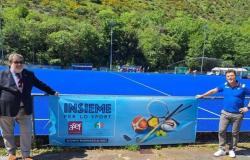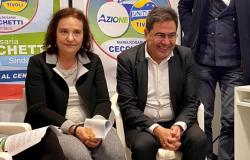ROVIGO – In the Flumina room of the Grandi Fiumi Museum, the excavations carried out at the former prison were presented in front of a large audience. The museum shows a Rovigo of…
Already a subscriber? Log in here!
SPECIAL OFFER
SPECIAL OFFER
MONTHLY
€4.99
€1 PER MONTH
For 3 months
ACTIVATE NOW
Then only €49.99 instead of €79.99/year
Subscribe with Google
The conference was opened by the president of Lions Club Rovigo Host, Ruggero Zambon: «Telling the first steps of our city means protecting and enhancing it. This pushed our association to start this project by having several restorations carried out. Recovering the former prison serves to tell our identity.” Sofia Teresa Bisi, teacher and journalist, added: «We are here at the Museum of the Great Rivers to read our present and discover our past. Rovigo, during the Renaissance, was a beautiful city rich in woods, roses, flowers and water. Its ancient name, Rodige, raises lexical questions and there are many hypotheses.” Valeria Cittadin, director of the Istituto Comprensivo 3 mentioned the student involvement: «I thank Lions for involving our school in this initiative, we had the opportunity to live a wonderful experience, an example for our children». Raffaele Peretto also said he was “really satisfied and a little moved to see the commitment and passion of the boys”.
Claudia Fiocchi concluded the meeting: «I have worked on this construction site since 2022. Everything was coordinated by prof. Massimiliano Fragran with the Superintendence of Fine Arts. The area was a monastic complex, which in 1700 became a cloistered convent. It was suppressed in 1810 and used as a court and prison twenty years later. During our excavations we found several precious artefacts for the history of the city».
FROM THE CASONS TO THE COURT
The project “Rodige. Birth and development of the city”, presented on Tuesday at the Museum of the Great Rivers, brought to light a significant construction stratigraphy, with remains of everyday objects. «The excavation – stated Raffaele Peretto of CPSSAE – enriches what was known about the city. In the 1960s I also took part in research around the courthouse during the restoration work. The existence in the 15th century of a has been confirmed monastery named after Holy Trinity; elements have emerged that deserve further investigation.” «The works carried out with the Archetipo company – added the archaeologist Claudia Fiocchi – brought to light traces of residential buildings dating back to the 13th century. The monastic complex was founded in 1497, with extensions in 1700. In 1810 the institute was abolished, replaced in 1829 by prison And court. The church, closed in 1871, was then demolished in 1872.”
PRECIOUS FINDS
«The excavations – completed the archaeologist and teacher Alessandra Marcante – were conducted at a depth of approximately 2 metres. They are emerged ceramics rough and others decorated, as well as many glass shards, buttons, coins. Remains of glasses, flasks and Venetian bottles can be recognized among the glass. A group of people participated in the work 13 students Casalini middle school». «The materials – added the ceramist Michelangelo Munarini – are interesting, linked to the functions of the convent. Among the emblematic objects, there is a bowled dish three-color graffito, late 15th century. with a female figure in a garden that looks like Caterina Sforza. Then there is a plate from the 16th century with the symbols of the city of Ferrara and a bowl with the auspicious image of a pregnant rabbit.” The finds, restored by Nathalie Antonioli and Barbara Bulgarelli, were photographed by the Polesine artist Raffaella Benetti, who presented a catalog in which they stand out for their beauty and their historical-cultural value.
Proud Valeria Cittadin, manager of Comprensivo 3, who underlined the educational value of the project. «The collections of our museum – added Chiara Vallini, curator of the Grandi Fiumi – are always evolving and are constantly the subject of in-depth analysis. The public admired some of the restored pieces, which will enrich our rooms.”
«Telling the story of the city – commented Ruggero Zambon, Lions president – is the first step towards protecting and enhancing it: this pushed the Lions Club Rovigo Host to put ‘Rodige’ into construction». At the end, a banquet hosted by the Lions Club.
© ALL RIGHTS RESERVED
Read the full article at
The Gazzettino






